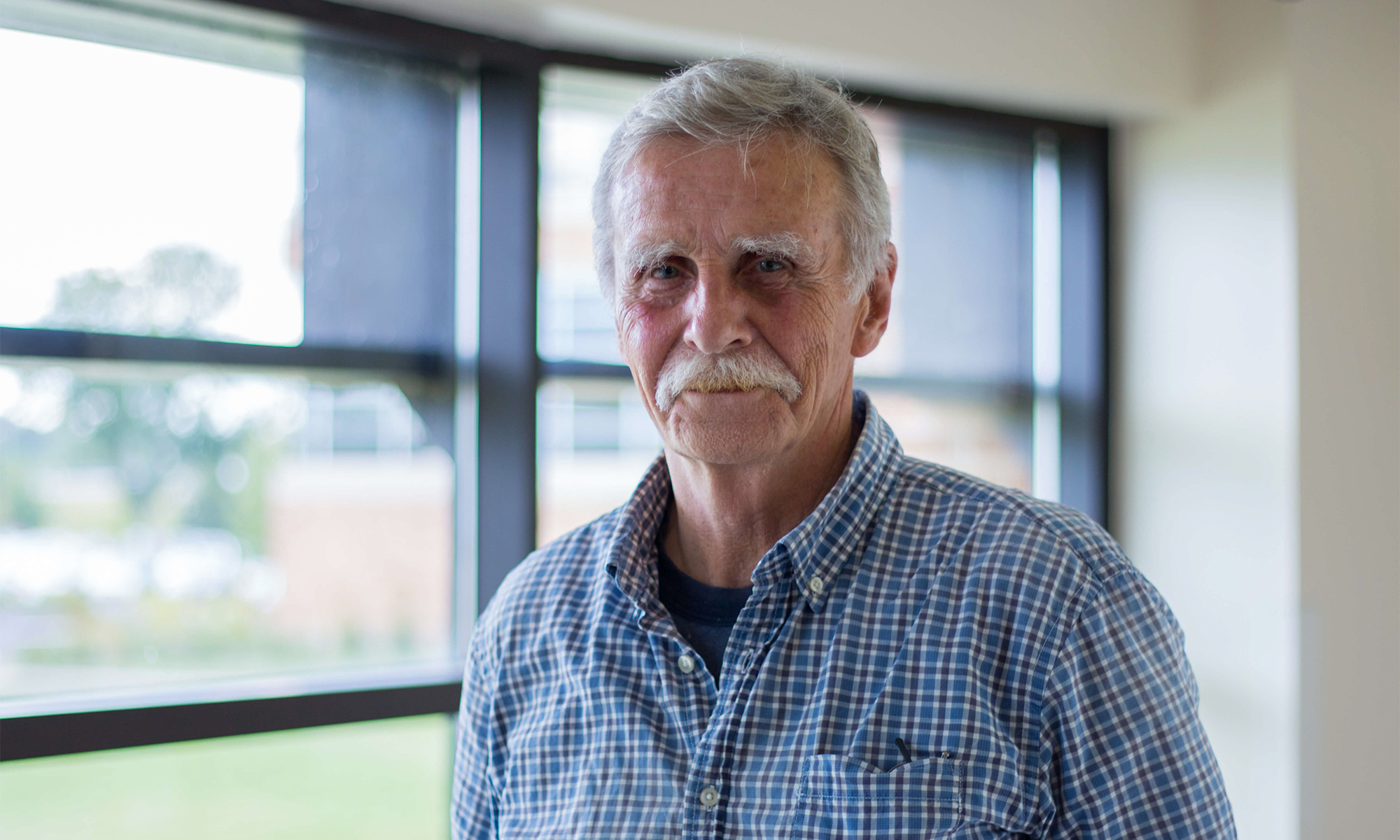
Editor's Note: This is one in a series of blog posts written by Rachel Heil ('19) highlighting Concordia faculty members' research efforts.
Paul Calhoun’s scholarly projects have always been inspired by the hardships his family has faced.
Prior to becoming a professor at Concordia University, Mr. Calhoun worked as a community organizer. While he worked in the profession for several years, he became frustrated by the lack of work being done and turned to his love for photography to help him change his career path.
“My wife had given me a camera,” Mr. Calhoun explained, “so during my lunch hour I would take photos. Taking photos gave me a lot of control and I didn’t have to depend on others. I discovered that things that were important to me I could address in my pictures.”
With this realization, Mr. Calhoun began teaching himself on how to improve his photography before quitting his job and going back to school. He taught at Cardinal Stritch before accepting a position in New York. This job in particular provided Mr. Calhoun with his first experience in grants. The position itself involved working with grants and Mr. Calhoun had the opportunity to work with major organizations such like the National Endowment for the Humanities. After five years in New York, Mr. Calhoun returned to Wisconsin and has been with the University for four years.
Not forgetting the importance of the grant world and wanting to use his love for photography, Mr. Calhoun began applying for grants in order to get funding for his Great Migration project. Along with students from the Milwaukee High School of the Arts, Mr. Calhoun has created a project to help more learn about the Great Migration of African Americans following the end of the First World War.
“The Great Migration was when African Americans were moving away from the South to the North.” Mr. Calhoun explained. “Because of World War One, there were industrial jobs in cities like Chicago, Detroit, New York. So there was an opportunity for those in the South to come up North and work those jobs. They were previously working in jobs that didn’t pay well and were facing discrimination.”
The high schools who have worked with Mr. Calhoun on this project have created several murals that depict the Great Migration. Not only are the students able to learn about this historic period, which many admitted to Mr. Calhoun they had never known about despite being African American, it also provides the students the opportunity to express themselves in a healthy way and grow their education by using a different medium to learn.
But, it was not just Mr. Calhoun’s interest in the subject and his desire to help these high school students that contributed to his reason for doing the project. In his own life, Mr. Calhoun has seen how refugees and immigrants often face troubles and hardships in creating a new life. His wife, herself an immigrant, has often faced such troubles.
“My wife came from Latin America, though she’s Chinese. She was born in America but for whatever reason they had to leave and they lived in El Salvador. When she was seven, her family returned to the States. Her experiences have had a big impact on me and the children, who are mixed race.”
Mr. Calhoun explained that certain problems have been raised because of his children being mixed raced, his son facing plenty of racism. While he spent his first years living in New York, he had little issue, as many of the children in their neighborhood came from different backgrounds. However, when the family moved to Wisconsin, Mr. Calhoun’s son soon faced discrimination.
Mr. Calhoun recalled a time when he sent his son to a day camp. After the first day, his son came home and asked him about a racial slur that had been used by one of the kids at the camp.
Based on these experiences, Mr. Calhoun has formed a strong interest in spreading awareness about the issue and has used photography to depict such hardships.
“It’s important to my family and everybody,” Mr. Calhoun explained. “Not too far down the line, this country will be a majority minority country and it has psychological effects for the population. If more people talked with refugees and immigrants, they will find that they aren’t that different from the rest of us. They want a family, they want a job, and they want to feel safe.”
For that reason, Mr. Calhoun has decided to become involved in scholarly activity in hopes of changing preconceived notions about refugees and immigrants. Mr. Calhoun admits the workload is a lot, but if you find something your passionate about, it is worth it, especially if that work can help make a difference.
—
If this story has inspired you, why not explore how you can help further Concordia's mission through giving.